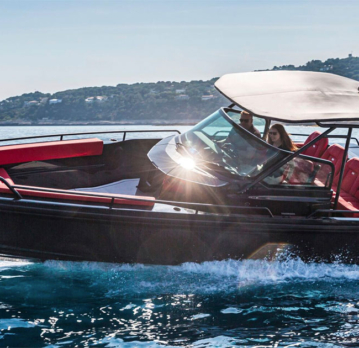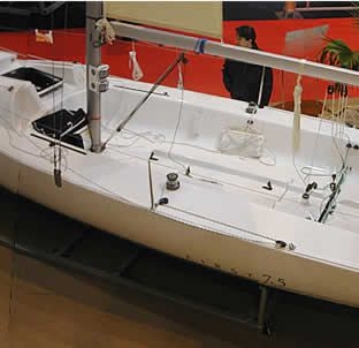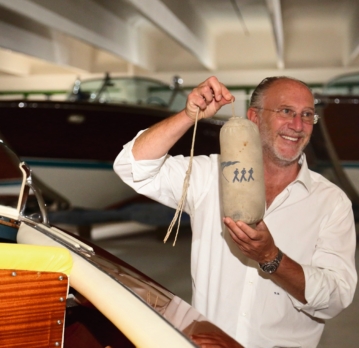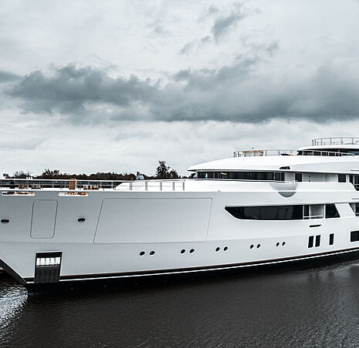February 6, 2019
The best gift to a man!
You do not know what to give a loved one on February 23? Which day you break your head, not knowing what to choose, and the holiday meanwhile getting closer?







Stop torturing yourself, we have the answer to your question. The best gift for a man on February 23 is the book-album “300 years (1718-2018). The history of sailing in Russia.
“I am amazed at the magnificence of the publication and the fantastic amount of illustrations,” wrote one of those who had already bought this book.
Also, those who receive it as a gift for a holiday, which has always been considered in our country as the Holiday of Real Men, will be able to say!
The book can be purchased in the shops of the shopping and leisure complex “Moscow”, “Biblio-Globus”, Moscow House of Books on Novy Arbat, “Young Guard”, House of Books “Medvedkovo” and “Morkniga” in Moscow, in the yacht shop “Rope Box” (Moscow region), as well as in the "St. Petersburg House of Books" and "Fordevind-regatta" in St. Petersburg, as well as in the online stores "Ozon" and "Labyrinth". And, of course, in the online store of the magazine Yacht Russia – https://www.yachtrussia.com/shop/books/.
What – do you doubt now? In this case, get acquainted with the fragments of one – the very first – chapter. And also with the way it looks in the book. See for yourself: both interesting and beautiful!
AT THE BEGINNING OF NICE AFFAIRS
During the reign of the Tsar of All Russia, and by the end of the life of Emperor Peter the Great of Russia, about 4,000 sovereign decrees were issued from the Romanov family. It happened that on the day Peter I signed them to a dozen, and many he drew with his own hand from the first to the last line. However, the date April 12, 1718 stands on only one decree, since the importance of the paper was special.
The document was called as follows: “On the maintenance of sailing and rowing ships in good condition and cleanliness distributed to the philistines, on building new ones in place of the same model, on leaving all ships on this signal to teach navigation and on monitoring the maintenance of private ships by the Commissioner philistines ".
Long as … It must be, therefore, this decree is usually defined shorter – “about the Hereditary Nevsky Fleet”, or even simpler – “About the Neva Flotilla”. Since that day, the history of Russian sailing has its countdown.
***
The initiator of many cases was Tsar Peter, already recognized as the Great by his contemporaries. But he also did not forget about the amusements, preferring to all others “exercises in the water”, which foreign envoys emphasized in their reports. And therefore, it’s really worth talking about Peter Alekseyevich’s love for sails and yachts, the result of which was the creation of the Neva Flotilla.
In the 40s of the XVII century, the ship bot Saint Nikolay was delivered from England as a gift to Tsar Alexei Mikhailovich. The gift, however, fell, as they say, not to the court and was given to the close relative of the sovereign Nikita Ivanov Romanov. A small boat was hidden in the barn of the boyar demesne, in the village of Izmailovo. There, many years later, at the end of May 1688, he was discovered by the restless young Tsar Peter Alekseevich. And as he discovered, so … This is how the historian Alexey Tikhomirov tells about it: “And as he discovered, he bulged his eyes, stamped his foot in his morocco boot, and barked not childishly:“ I want! Where is Timmerman? "Timmerman clicked …"
Before knowledge, Peter was greedy, while the Dutchman Franz Timmerman, a former military sailor, taught the basics of astronomy, fortification and ballistics to him. Timmerman Botik examined, praised the "aglitskoe" quality and announced that "this vessel" has cracked from the time, but is subject to recovery.
In 1693, Peter first saw the sea. White … In Arkhangelsk, he boarded the yacht "Saint Peter", built in Kholmogory by the Dutch masters Bass and Jansen. It was on this yacht that the Russian shipboard standard, now stored at the Central Naval Museum of St. Petersburg, was first raised.
On this yacht, which had shvertsy on the sides, one mast and armament of 12 three-pound cannons, the young king accompanied the ships of the Dutch and English merchants leaving Arkhangelsk. In May of the following, in 1694, the sovereign made a voyage to the Solovetsky Islands, after which he again acted as a “bodyguard” at the merchant caravan, reaching with him the Cape Holy Nose, before going out to the ocean.
In March 1697, the Great Embassy left Moscow, as part of which Peter I. himself was listed under the name of Peter Mikhailov’s foreman of “volunteers”. In August, the embassy arrived in the Dutch city of Saardam, whose harbor was crowded with yachts. These were small single-mast vessels that were used as messengers and for reconnaissance during military operations, but their civil purpose was in another – they were simply sailed, walked, that is, sailed along the coast, although in the open sea the yachts felt confident. In 1660, the Dutch presented one of these yachts to the English king, Charles II, and now the autocrat of distant Muscovy wished to purchase a similar one.
Four days after his arrival, Peter bought 426 guilders an elegant and high-speed snowboar (a distinctive feature of the Dutch ice-boats of those times was slanting sails and big tails along the sides; they called the boats “skating yachts” only later). At the time of Peter’s stay in Holland, this ice-picker was to become his “personal” yacht, and so it happened – the tsar-helmsman performed short sea crossings on it, and also visited Amsterdam twice. Noticing the interest of the Muscovites in sails and yachts, the Dutch arranged several races for them to play, and then on September 1, 1697, on the River Hey, they gave an idea at all – an exemplary battle of small ships.
During his fateful European “voyage”, Peter I met twice with the King of England and Hollander of the Netherlands, William III of Orange, who after these meetings decided to give him his 84-foot two-masted yacht The Transport Royal. January 11, 1698 Peter I arrived in London, where he was presented with this valuable gift. After testing The Transport Royal on the water, the king was pleased. In April, accompanied by an escort of British ships, he sailed to the shores of Holland. From there, the yacht was transferred to Arkhangelsk. In August 1702, Peter I walked on it along the White Sea.
However, it was necessary to start building on our own land, and in 1702 a Dutchman, Vybe, Gerens, was launched at the Voronezh shipyard by the Dutch saint Catherine. Following it, in the same shipyard according to the drawings drawn up by the shipmaster Peter Mikhailov, that is, by Peter himself, the yacht Libe was built. A few years later another “Saint Catherine” appeared in the Baltic, but already in the “aglitsky” production, and in 1706 the Nadezhda yacht slipped from the stocks of the Main Admiralty.
These were the first, sometimes awkward, timid steps. It was time to make new ones, to step more confidently. Circumstances demanded.
***
Fun, entertainment … Without refusing this, Tsar Peter had a goal of a different scale, a state one, a great goal. Having cut through that very “window to Europe”, he introduced the formerly land-based Russia to a number of maritime powers. But where to take the sailors?
And again, let us give the floor to historian Alexei Tikhomirov: “Russians didn’t have any historical memory or hereditary skills in maritime matters, except for the coast-dwellers of Arkhangelsk, because they are small in number. And if you don’t push it and don’t kick it with your royal boot, then how many generations will be needed before the subjects' blood is diluted with sea water and the heads are cleaned with the wind when Russians begin to go to sea in the hunt, and not as a frontal one, citizens of the new capital, which is being built on the swampy banks of the Neva, is a laudable habit of sailing on large and small sailing ships not only for the sake of, but also pleasure for. ”
Peter could not wait. Time was expensive, and it was not in the factory that the sovereign had to persuade and persuade.
Peter I did not pardon others, but he did not regret himself either, realizing that it was fair to take a sample from the king.
“What pop is, the parish is like that,” he would say. – Everyone looks at the chief, in order to follow his hunt, and before that the head hunter, before that, and all the hunters.
And when the personal example did not work, Peter let go of the “boot”. But not immediately. At first, as in many of his undertakings, Peter relied on foreigners: he touted, paid, listened. To this should be added the study abroad of future Russian skippers, the creation in Moscow of a school of mathematical and navigational sciences. This somewhat relieved the urgency of the problem, and still there were not enough people on the decks, and the sea service was still perceived by the people either as a heavy duty, or as indulging the eccentricities of a stern ruler.
We had to take action. And Peter forbade to build a bridge over the Neva. In general, city bridges as such, although circulars to this effect were submitted to him. For this is an untimely and even harmful business! And not only because bridges would prevent ships from passing along the Neva. With this, in the same Holland, they learned how to cope: you can make one span of a lift or take it aside on pontoons. No, not only that. St. Petersburgers of "all ranks" should swim from shore to shore on rivers, boats, yachts, developing the same habit, from which there is only one step to love. And to sail! To row – only as a last resort, and who disobeys, will be in the wind to row, to that the penalty. The duty to “fiskalit” and distribute fines by decree of July 3, 1710 was imputed to the special commissioner in the person of stolnik Ivan Stepanovich Potemkin.
The severity of laws in Russia, as is known, is mitigated by the non-binding nature of their implementation. It was the same under Peter I, although it ended for the disobedient, sometimes more than pitiable, and could be pulled up on the rack. So with this decree did not work out. And the penalties did not scare. And there were excuses: they said, there was a wind, but it swam, for "this matter is flying." As a result, in 1715 a new decree was issued, according to which thirty “transportable” sailing ships were assigned to Potemkin’s concerns (mostly they were built in Kazan by the boatman), and no other ships, except these, were allowed to move the Neva.
It will not be enough … It is clear that the intercessors immediately appeared, asking for a special relationship, permission to have personal ships, but they will build them themselves, but there is no ability. Many of these were just words, and in 1716 Peter I founded a Particular shipyard with his new command to build "transportable" and other vessels, as well as to supervise those who decide to build on their own. The same Potemkin became the shipmaster of the shipyard.
The affairs of the new shipyard were not shaky or shaky, about which the executive quartermaster informed the tsar. And then Peter did what no one expected from him, but which, in essence, was quite in the spirit of the king-reformer. In 1718, he announced the creation, "for the amusement of the people, especially for the best training and art" of the Hereditary Neva Fleet.
***
At the expense of the treasury, and it took 125 thousand rubles, the amount at that time was gigantic, more than 100 ships were built. In total, the flotilla consisted of 141 vessels, of which 24 belonged to Peter I.
These vessels were handed over to the highest dignitaries, hierarchs, admirals, foreign doctors, the governing senate, the Synod, the Nevsky Monastery, the foreign college … They were transmitted free of charge to the eternal and hereditary possession with the immutable requirement that “the owners repaired them and again did at their own expense and would build no less, but more. " Potemkin was to supervise the fleet – where could it be without him? – and soon Ivan Stepanovich began secretly to magnify the Nevsky admiral, just as the Hereditary fleet began to be called in everyday life the Neva Flotilla.
On April 12, 1718, a decree was issued that brought into effect the instruction developed under the authority of the tsar and approved by the Admiralty Board. This instruction (in fact, the charter) defined the obligations of the persons who received the ships.
Point five said: “It is due to the shipowner to arrive at the place designated by the Commissioner at any given hour on Sunday. If the wind is nasty, then on the first day after Sunday, in which there will be a comfortable wind, move in at the specified hour … And, as a matter of fact, not everyone knows the compass, then the Commissioner must raise flags in six places … And when it is stated he will leave, except for certain days, then the same sign to inflict, yes one shot from the cannon from the city to do. Then immediately everyone will go to the appointed place and appear to the Commissioner or, after weaning him, to whom he will order, and then go to that place for so many hours: in May – 3.5, in June – 4, in July – 3.5, in August – 3, in September – 2.5, in October – 2, maneuvering for training for training … When the Commissioner lowers the flag on her mast, then go home. On this exertion, the owners are free to be or not to be each time, however, no more than two times a month, unless for some legitimate reason, but to send, who have children or relatives, and who have not, people, under the penalty : for the first time – 3 rubles, for the second time – 6 rubles, for the third – 9 ".
Peter I’s concern about the Nevsky Fleet was such that in special instructions he wrote everything down to the last detail. How to care for vessels, “protecting them from uncleanness”, how to coat the hull and parts with different garpius (spruce sulfur) and lard, how to keep the rigging in good condition …
And in general: “On those ships nothing heavy, namely bricks, firewood, lime and other things, from which it can become unclean, not carry, keeping them free from dirt and impurities, because from that they spoil more than from water. Also keep the ship under the roof, so as not to get wet and do not blow it with the sun. ”
276 February 6, 2019 # 8776
Chief Editor
giftman













What do you think?